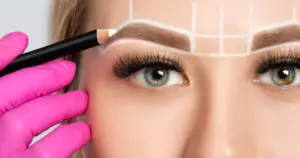Is exosomes for hair loss a good solution? Results?

Exosome therapy is a cheaper alternative to hair replacement surgery?!
Yes, you heard that right.
Exosome therapy can be your solution to hair loss!
Hair Loss, a condition we have all fallen victim to once in our lives; but is it irreversible?
Is there an alternative to hair replacement?
Yes!
Do you want to know exosome for hair loss therapy work for hair loss restoration? You are at the right place to know more information about exosome hair therapy and exosome hair therapy side effects.
What are exosomes and how do they work?
Using exosomes for hair loss is a new hair treatment methodology. To understand how exosomal therapy works, one must know what hair loss is, its causes, and other treatment methods.
Let’s get started and go over all of these topics!
Hair loss is a common problem that both men and women experience.
A survey conducted in 2016 states that
- 40% of men go bald by the time they turn 35.
- 60% of men lose all their hair when they are 60 years old.
- Women aged 60 would have lost 40% of their hair.
So what causes hair loss?
Stress, poor lifestyle habits, and genetics are a few common culprits. These factors impact hair quality which results in varying degrees of hair loss. Besides this, physiological problems and mental health issues also promote hair loss.
Causes of Hair Loss
Stress: There are three types of hair loss caused due to high levels of stress.
Telogen effluvium: This is the phase where hair follicles move to a resting period due to high stress. During this stage, affected hair strands may fall off due to sunlight exposure or hair wash.
Trichotillomania: (irresistible hair pulling) – Hair pulling due to frustration, boredom or other related causes. Repetition of this habit leads to severe hair fall.
Alopecia areata: A condition where the body’s immune system attacks the hair follicles, resulting in hair loss.
Many experts believe high-stress levels can trigger this condition.
Managing your stress levels has a direct impact on hair loss. However, if you suffer from severe hair fall, visit a dermatologist to ensure that it is not due to any underlying medical conditions [1].
Genetics: Genetics play a key role in hair loss. It is classified into two categories.
Male Pattern Baldness(MPB): Male pattern baldness can appear in an m-shape, in patches, or in the form of a receding hairline. MPB starts in men of ages between 20 and 30. It is found in at least 80% of men and is usually seen in quite a few 80-year-olds [2].
Female Pattern Baldness(FPB): The exact reason for FBP is unknown. But according to popular reasoning, various genes similar to MPB may be the primary cause. Symptoms may develop during the teenage years, but it is commonly found in women after menopause and women who experience changes in thyroid hormone levels [3].
Other factors include drug use, birth control, radiation therapy, and hormonal changes.
Alternate Hair Restoration Methods
Since hair loss can result from stress, your diet, and various other factors, you can try controlling it by fixing your diet, watching your stress levels, and ensuring overall health.
However, these can be preventative but not necessarily a solution.
Permanent solutions vary from hair transplantation to hair weaving and so many others available in the market. But most of them are expensive. So it is only natural that people turn to other methods.
One of the popular non-surgical methods is Platelet Rich Plasma (PRP). It involves the process of using your platelets to induce hair follicle growth.
It provided great results against thinning hair. But, for cases with 70 -100% baldness, the results were mixed.
Some of the most popular alternatives are,
1. Minoxidil [4]
It is a popular alternative to a hair transplant. It arrests future hair loss and promotes overall hair growth, but can have side effects like scalp irritation.
2. Finasteride
This medication works by decreasing the amount of a natural body hormone called DTH. It has proven to result in 80% improvement in hair growth but causes a few side effects, especially in women.
3. Laser treatments
Also known as red light therapy, irradiated photons into the scalp tissue. The weak cells in the scalp absorb these photons that encourage hair growth.
It is an expensive alternative that does not work for everyone.
4. Redensyl
This is a relatively new method to reverse hair loss. Redensyl is also known as a hair growth galvanizer and is a hair serum made of organic solvents. It is known to slow down the telogen phase and increase the anagen phase of hair growth.
5. Mesotherapy
This technique was initially used on the skin but is now being used on the scalp to induce hair growth. It is known to cause severe side effects.
6. Other researches
Another study revolves around the idea of producing an organoid structure to combine stem cells and mice’s dermal papilla cells to create hair structure. This, however, failed when attempted on humans [5] [6].
All these failed to provide a one-stop, cost-effective solution with minimal side effects.
Here, exosomes treatment takes over.
It does not involve a surgical procedure but is highly effective.
So what are exosomes?
Exosomes for hair loss
Exosomes are extracellular vacuoles derived from stem cells and are involved in cell communication. Which in layman’s terms simply means that these exosomes play a role in the internal workings of the cells, that is usually communicated directly with one another. Millions of stem cells use them as a medium to communicate with each other. They are byproducts of stem cells [7].
The exosomes used for hair growth are different from the ones released by a virus or bacteria.
Role of Exosomes in Hair Growth
Using exosomes for hair loss is a developing procedure and is not subjected to clinical trials. Since the data available is minimal, it is hard to affirm any pattern of hair growth.
The exosomes are obtained from the bone marrow and are derivatives of mesenchymal stem cells. These exosomes then undergo the process of sterilization and purification. They are then considered the purest form of signaling, directing tissue, and wound healing by activating cell responses.
Due to these properties, use of exosomes is one of the most effective forms of regenerative therapies that utilize naturally bioactive products.
The procedure involves harvesting a large number of mesenchymal cells on your scalp.
It activates the stem cells present on your scalp while focusing mainly on the bulk area. It also promotes the growth of miniaturized and new hair.
Hair transplant surgeons suggest this treatment to be a positive breakthrough. There have been cases of patients where new hair follicles grew on bald scalps. An accomplishment never achieved before. This method is considered to be more efficient than the PRP method.
Yet, a clear path needs to be established in the practical use of exosomes hair treatment.
Clinical trials have to be conducted for a significant sample space, efficacy, and long-term – short-term effects have to be evaluated [8] [9].
Also Read: Benefits of Moringa Oil and Powder for Your Hair
Exosomes Hair Restoration – Procedure
There are two procedures that are usually practiced, one being injecting the serum that consists of the exosomes directly into the scalp, and the second being micro-needling; the process of puncturing the scalp to improve hair retention.
The procedure begins by numbing the scalp with lidocaine (local anesthesia). Then several dozen painless injections containing the solution of exosomes are injected. These exosomes are collected from a healthy donor.
This process takes two to three sittings, depending on the degree of baldness. The scalp is then protected with a bandage to minimize swelling and speed recovery.
One can notice results within 4-8 weeks where injected exosomes act on the scalp and stimulate blood flow, thereby generating new hair.
Maintenance treatments are performed after three months to promote healthy hair growth. By this time, a noticeable amount of hair would have grown.
After six months, the last sitting is done to ensure the density and quality of hair.
Prolonging the Hair Growth Cycle
Exosomes prolong the hair growth cycle of a person, which is its primary advantage. Hair follicles stuck in the telogen phase (resting phase) convert to the anagen phase(growth phase) and prolong the cycle.
Hair growth produced by exosomes is independent of aging hair. As the scalp ages, naturally, grown hair might fall off. But stimulated hair due to exosomes would resist all hormonal changes, thereby making hair growth a permanent solution.
Exosomes reduce the shrinking and growth of brittle hair strands (miniaturization). From there, without treatment, hair strands continue [shrinking] after each telogen phase until growth ceases to complete.
Many hair care products and treatments help prolong hair growth. None of them are as capable as exosomes. The hair growth cycle remains intact longer while hair strands become thicker and healthier.
Also Read: Benefits of Vitamin E for Hair
Here is a summary of the article.
Wrapping up
Exosome treatment proves to have great potential for treating hair loss. It replaces every available hair restoration therapy available, even hair transplantation.
It is safe, effective, and does not cause any side effects.
For the time being, exosome hair therapy is an emerging treatment that requires fine-tuning.
What next?
Here is a list of vital nutrients essential for hair growth.
Frequently Asked Questions
Q: How long does it take to see noticeable results on hair growth?
A: Usually, the duration is 2-3 months, but hair growth may continue for one year. To see a noticeable change in your scalp, the time taken would be about six months.
Q: How many sessions of exosomes hair therapy should one undertake?
A: It depends on the type of hair thinning that has happened. Usually, two sittings are recommended for a person, with each procedure conducted within a gap of 6 months.
Q: Is the donor screened before his exosomes are considered for therapy?
A: Yes, the donor is scanned for HIV and Hepatitis. It is documented along with the medical history of the donor.
Q: How many exosomes does a vial contain?
A: For a hair loss treatment, up to 350 – 400 billion exosomes are utilized. Experts believe this number to be significant enough to regenerate hair growth.
Q: What are the side effects of exosomes treatment for hair?
A: Exosomes hair therapy does not cause any side effects. They stay on the scalp for nearly 6-8 months.
Q: Do exosomes cause CANCER?
A: Exosomes are byproducts of stem cells used to CURE CANCER cells. Going by this reference, they do not have any role in initiating CANCER cells.
Q: How much does exosomes hair therapy cost?
A: As a rough estimate, these hair transplants cost anywhere from 3000 dollars to 10000 dollars.
References
- NIH. “How stress causes hair loss.” NIH Research Matters, 2021
- William Cranwell. “Male Androgenetic Alopecia.” NCBI
- G. Fabbrocini, M. Cantelli, A. Masarà,⁎ M.C. Annunziata, C. Marasca, and S. Cacciapuoti. “Female pattern hair loss: A clinical, pathophysiologic, and therapeutic review.” 2018
- Poonkiat Suchonwanit,1 Sasima Thammarucha,1 and Kanchana Leerunyakul. “Minoxidil and its use in hair disorders: a review.” 2019
- Jiyoon Lee,1 Robert Boescke,2 Pei-Ciao Tang,1 Byron H. Hartman,2 Stefan Heller,2 and Karl R. Koehler. “Hair follicle development in mouse pluripotent stem cell-derived skin organoids.” 2018
- Ehsan Taghiabadi 1, Mohammad Ali Nilforoushzadeh 2, Nasser Aghdami. “Maintaining Hair Inductivity in Human Dermal Papilla Cells: A Review of Effective Methods.” 2020
- Andjela Egger,1 Marjana Tomic-Canic,1 and Antonella Tosti. “Advances in Stem Cell-Based Therapy for Hair Loss.” 2020
- – Aditya K Gupta 1, Helen J Renaud 2, Yael Halaas 3, Jeffrey A Rapaport. “Exosomes: A New Effective Non-Surgical Therapy for Androgenetic Alopecia?” 2020
- Shiqi Hu 1 2, Zhenhua Li 1 2, Halle Lutz 1 2, Ke Huang 1, Teng Su 1 2, Jhon Cores 1, Phuong-Uyen Cao Dinh 1, Ke Cheng. “Dermal exosomes containing miR-218-5p promote hair regeneration by regulating β-catenin signaling.” 2020



![Top 5 Benefits of Collagen for Hair [With Best Foods]](https://keevs.com/wp-content/uploads/2023/01/Collagen-for-Hair-300x158.png)



